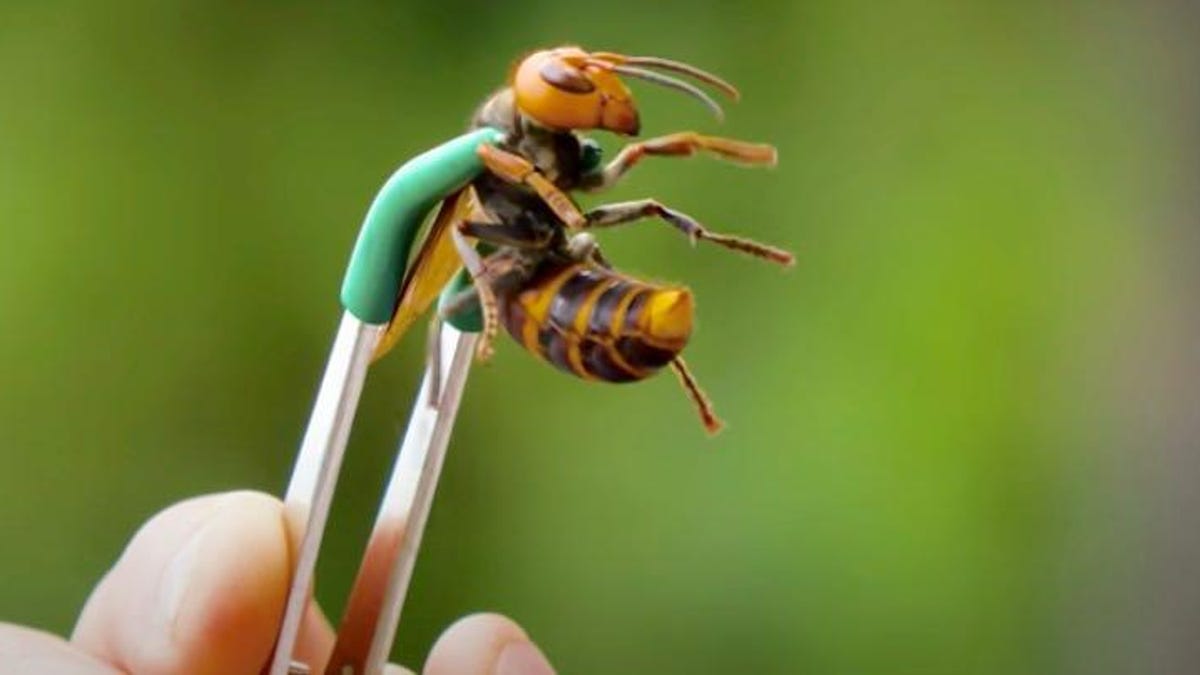US Congress to establish 'murder hornet' eradication pilot program
The federal program would provide financial assistance to states for management, research and education necessary to eradicate the Asian giant hornet.

Asian giant hornets, also called Murder Hornets, are up to two inches long and can sting its victim multiple times.
Asian giant hornets (Vespa mandarinia) -- nicknamed "murder hornets" -- may have invaded Washington state in 2020, but that doesn't mean the US is going to continue to allow it to happen. While the first Asian giant hornets' nest found in Washington state was studied and destroyed in October, new legislation proposed on Monday will be offering financial assistance to Washington and other states that might need help in the fight against the deadly insects.
A bill introduced in the House of Representatives on Monday proposes creating a pilot program to provide financial assistance to states for the management, research and public education activities necessary to "eradicate the Asian giant hornet; and restore bee populations damaged by the Asian giant hornet." The bill was suggested by the US Secretary of the Interior, working with the US Director of the Fish and Wildlife Service, and in consultation with all relevant federal agencies.
page 4073 of the omnibus bill pic.twitter.com/IOrleNCuw8
— A.P. Joyce (@AndrewPaulJoyce) December 21, 2020
Once a state has demonstrated to the Secretary of the Interior a sufficient need to implement measures to eradicate the Asian giant hornet, the federal government would pay up to 75% of the costs of activities carried out under the pilot program.
While a large Asian giant hornets' nest was already destroyed, the Washington State Department of Agriculture believes there may be more nests not on their radar.
"The eradication went very smoothly, even though our original plan had to be adapted due to the fact that the nest was in a tree, rather than the ground," managing entomologist Sven Spichiger said on Oct. 26. "While this is certainly a morale boost, this is only the start of our work to hopefully prevent the Asian giant hornet from gaining a foothold in the Pacific Northwest. We suspect there may be more nests [in the northern part of the state]."
The WSDA has been actively searching for murder hornet nests since the insects first showed up. The first confirmed detection of an Asian giant hornet in Washington occurred in December 2019, and the first hornet trapped in July of this year.
Asian giant hornets earned the nickname "murder hornets" because of their ability to wipe out full colonies of honeybees, which is alarming since bee populations are already in decline, putting them on endangered lists. Just a few Asian giant hornets can destroy a honey beehive in a matter of hours.
As for harm to humans, Asian giant hornet stinger is longer than that of a typical wasp and can sting several times. A single sting can deliver a large dose of venom that can damage skin tissue. If you want to avoid getting stung by the Asian giant hornet, WSDA has a few suggestions.

